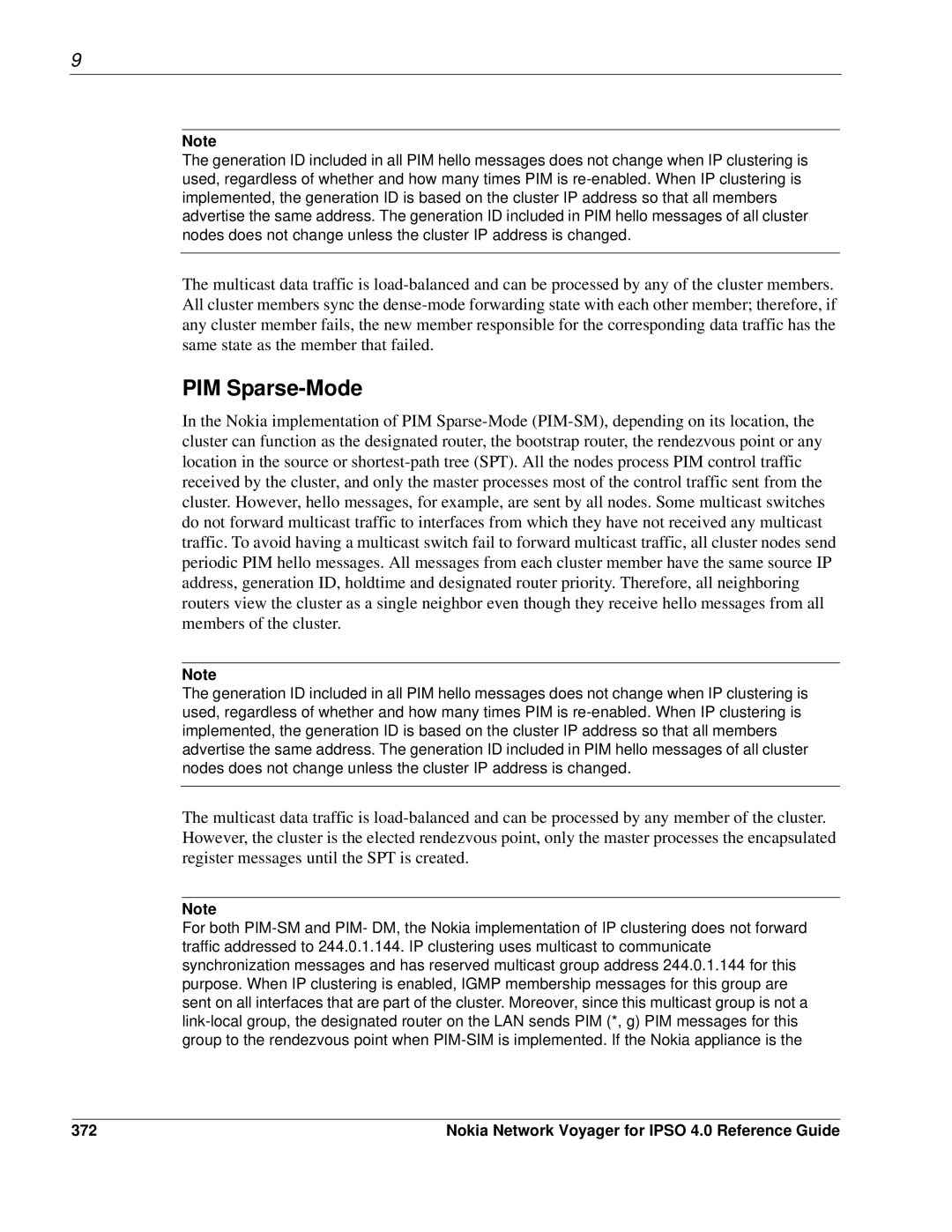
9
Note
The generation ID included in all PIM hello messages does not change when IP clustering is used, regardless of whether and how many times PIM is
The multicast data traffic is
PIM Sparse-Mode
In the Nokia implementation of PIM
Note
The generation ID included in all PIM hello messages does not change when IP clustering is used, regardless of whether and how many times PIM is
The multicast data traffic is
Note
For both
372 | Nokia Network Voyager for IPSO 4.0 Reference Guide |
